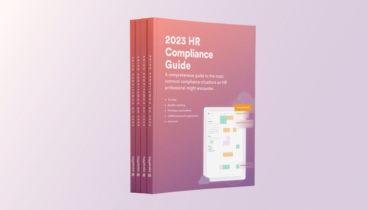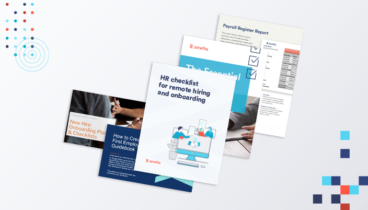When it comes to your parental leave policy, find out how you can utilize state and federal benefits, and how you might consider using them to bolster your own benefits for your staff.

When eligible employees welcome a new child by birth, adoption, or foster care, they may take what is known as parental leave. This extended period away from work allows them time to bond with and care for the new family addition. While parental leave may seem set up for new mothers, men use it, too. Reportedly, about 90% of men in the U.S. take some time off after a child’s birth or adoption. It’s important for companies to approach this correctly from both an operational and an employee work-life-balance standpoint. Therefore, employers and their human resources departments should be proactive in developing a company parental leave policy. Among other things, it should address when, for how long, and the circumstances for which mothers and fathers may take this type of leave.
What is a parental leave policy?
Parental leave policies are company plans that address employees taking off work due to the arrival of a new child. The federal Family and Medical Leave Act requires that certain employers protect eligible employees’ jobs during this time. FMLA entitles these employees to unpaid leave time, not to paid leave. Some organizations offer additional benefits beyond FMLA leave. For example, they may offer paid parental leave, more time off, flexible schedules, or any combination of helpful perks.
A parental leave policy is a guideline for employers and employees. It outlines expectations and protocol for all in the event of a child’s birth or adoption or alternative placement.
Why is a company parental leave policy important?
In most organizations, the expansion of employees’ families is inevitable. A company’s parental leave policy is essential to help the temporary-leave scenario run as smoothly as possible for all. Employers want to ensure that work still gets done with as few snags as possible. Employees want time to spend with their new child without worrying about work.
A thorough parental leave policy helps mitigate some of the most common adverse effects of this leave of absence, including:
- The financial burden of lost wages, which becomes less of an issue if the company offers paid time off.
- Difficulties returning to work from parental leave.
- Potential impediments to career advancement.
- Temporary workplace and/or workflow disruption.
In addition, a successful parental leave policy provides supportive solutions that foster the employee’s mental and physical well-being. It should guide human resources and management teams as well as employees in:
- Understanding eligibility requirements and how long it lasts.
- Properly requesting parental leave.
- How to prepare for paternity or maternity leave.
- Returning to work afterward.
- Other defined protocol and expectations.
Steps for creating a good parental leave policy
A mutually beneficial parental leave policy must be thoughtfully planned, clear, and comprehensive in addressing both everyday and special circumstances.
From there, follow these steps to create a relevant, complete parental leave policy:
- At a minimum, plan to comply with FMLA and any applicable state leave legislation.
- Determine the eligibility requirements for employees. These may apply company-wide or differ per job category or other specifics.
- Determine whether or not the company will provide paid parental leave. This will require assessing the budget.
- Decide how many weeks of unpaid leave to include following the birth or arrival of a new child.
- Add any further support the company will provide employees, if applicable, and the terms and details of those perks.
- Outline all expectations that will apply before, during, and upon return from parental leave.
Rather than focusing only on individual family dynamics, include gender-neutral language that can apply to anyone, regardless of familial role.
Make your parental leave policy available in multiple ways. Add it to the company’s employee handbook, website, onboarding materials, and meeting topics. Make sure every member of the HR department understands it thoroughly.
What to include in an employee parental leave policy
While parental leave policies vary widely by company and across industries, certain elements shouldn’t be omitted. The more definitively and succinctly employers can explain the policy, the better they manage employee expectations and avoid miscommunications.
Define who is a parent
Some policies are lenient and include stepparents and foster parents, while others only cover biological and adoptive parents. Each of these relationships should be included in the policy and whether they are eligible for parental leave.
Highlight other eligibility requirements
Address everything else that will or might affect employee eligibility. Include how long the employee must work for the company and/or how many hours per pay period.
Include specific benefits
Spell out if the leave is paid or unpaid, how many weeks of unpaid leave are allotted within a given period, if it must be taken all at once, and any other important stipulations. Explain if/how any extent of parental leave may be covered by other types, such as sick or sabbatical leave.
Will your company offer any other employee benefits or perks of particular value to parents? For example:
- Monetary and/or logistical help with childcare.
- Employee wellness programs.
- Flexible work schedules.
- Gift cards, stipends, or vouchers for meals, home help, or something else of practical or enjoyment value.
Additional ideas for your policy may be gleaned from employees and questions they ask HR about maternity leave.
Determine the full scope of maternity and paternity leave benefits you’ll offer. And help employees understand the advantages of taking parental leave and how to make the most of it.
Review, feedback, and regular updates
A well-structured, inclusive parental leave policy is a key component of a modern workplace. Gathering employee ideas for crafting and implementing yours can benefit the effort. HR can collect these via surveys, reviews, roundtable sessions, and casual conversations.
Ask key employees, team members, and legal advisors to review the policy in its draft form. Welcome their suggestions, corrections, and other input, and make integrations prior to finalizing it.
Maintaining a workable parental leave policy offers distinct benefits to employers and employees alike. But even these policies aren’t written in stone. Review yours periodically as the company and workplace evolve, and revise it as appropriate.
Business, like life, is a journey. And we’re with you, every step. Check back daily for ongoing tips, tools, and resources for career, HR, and business management.







